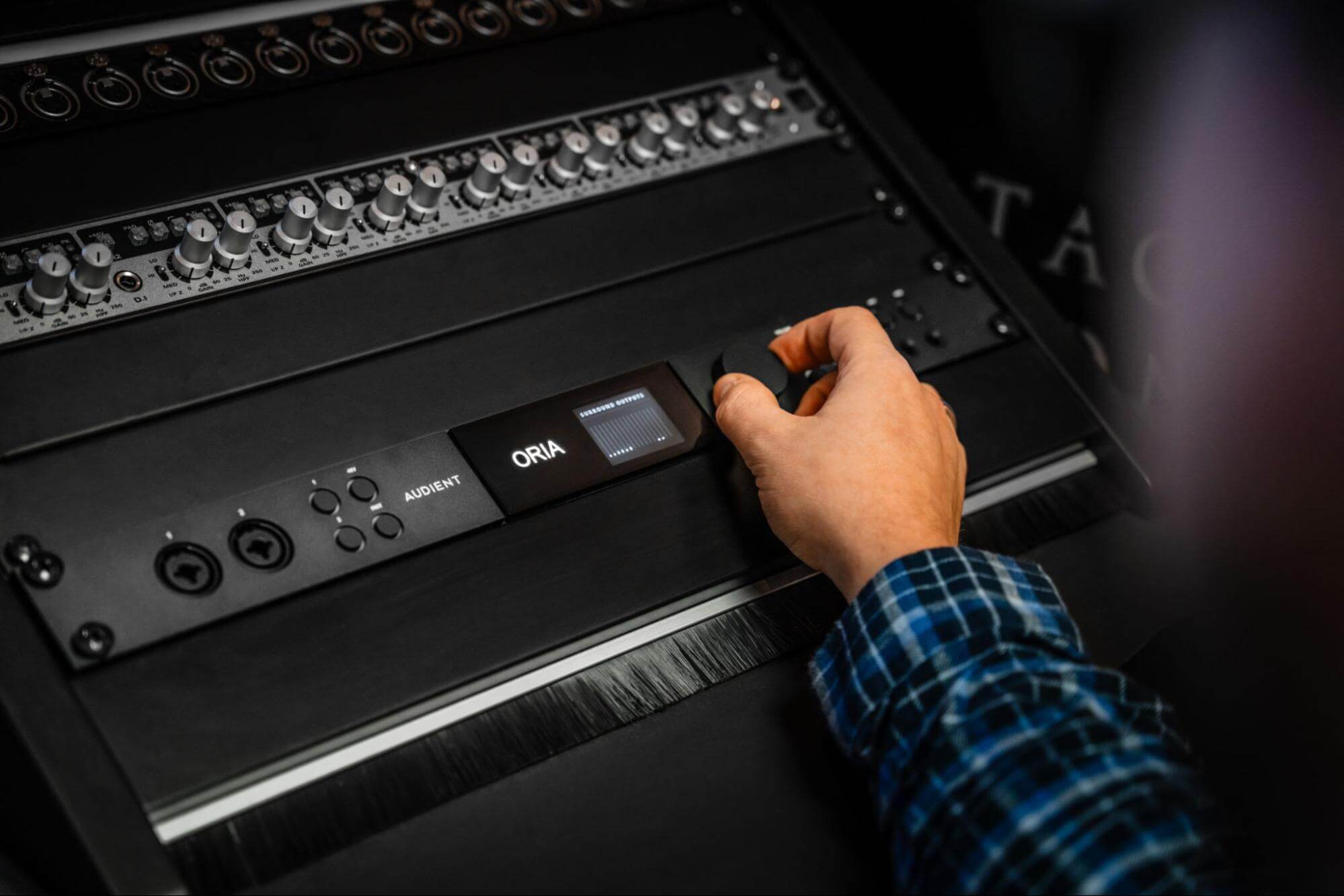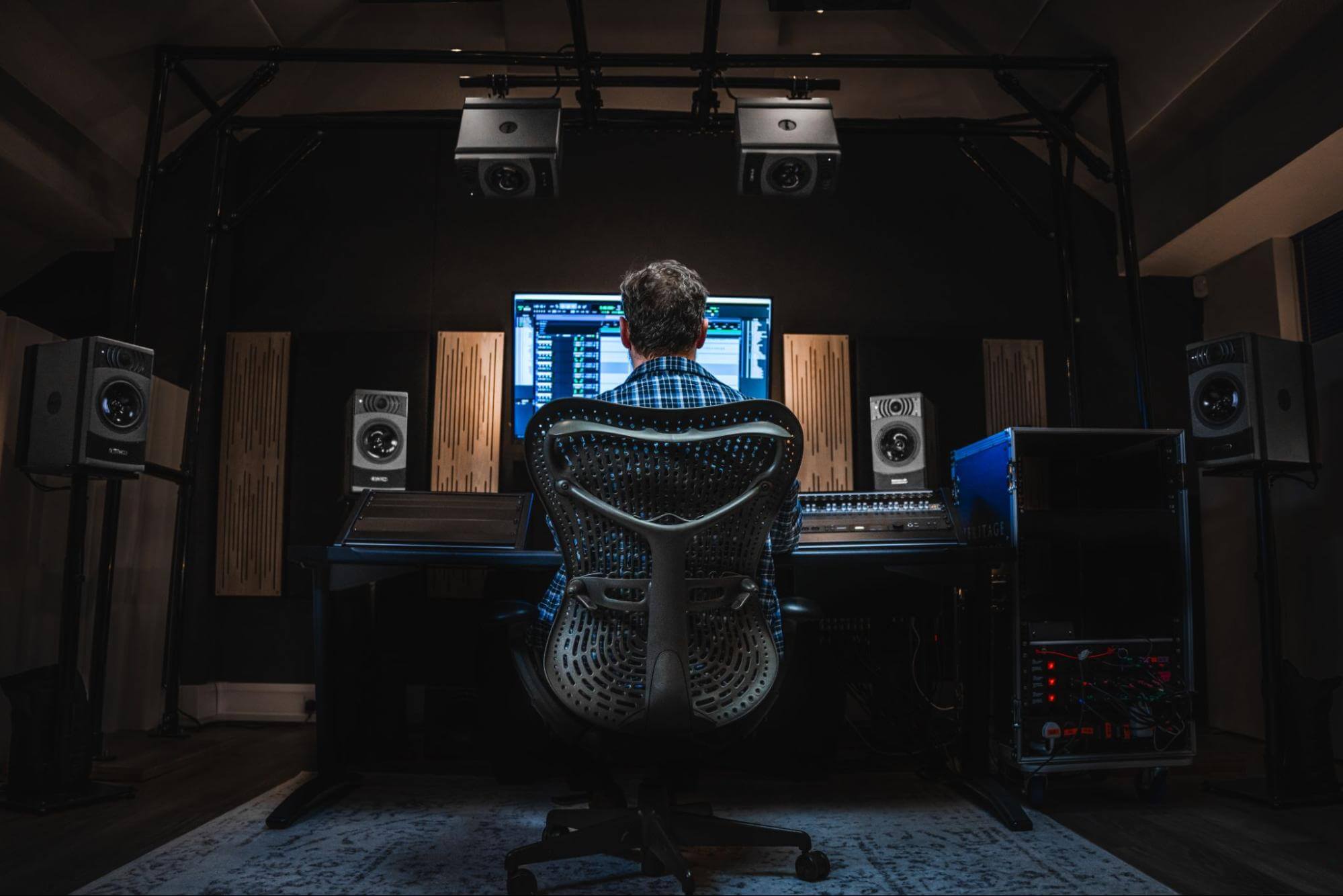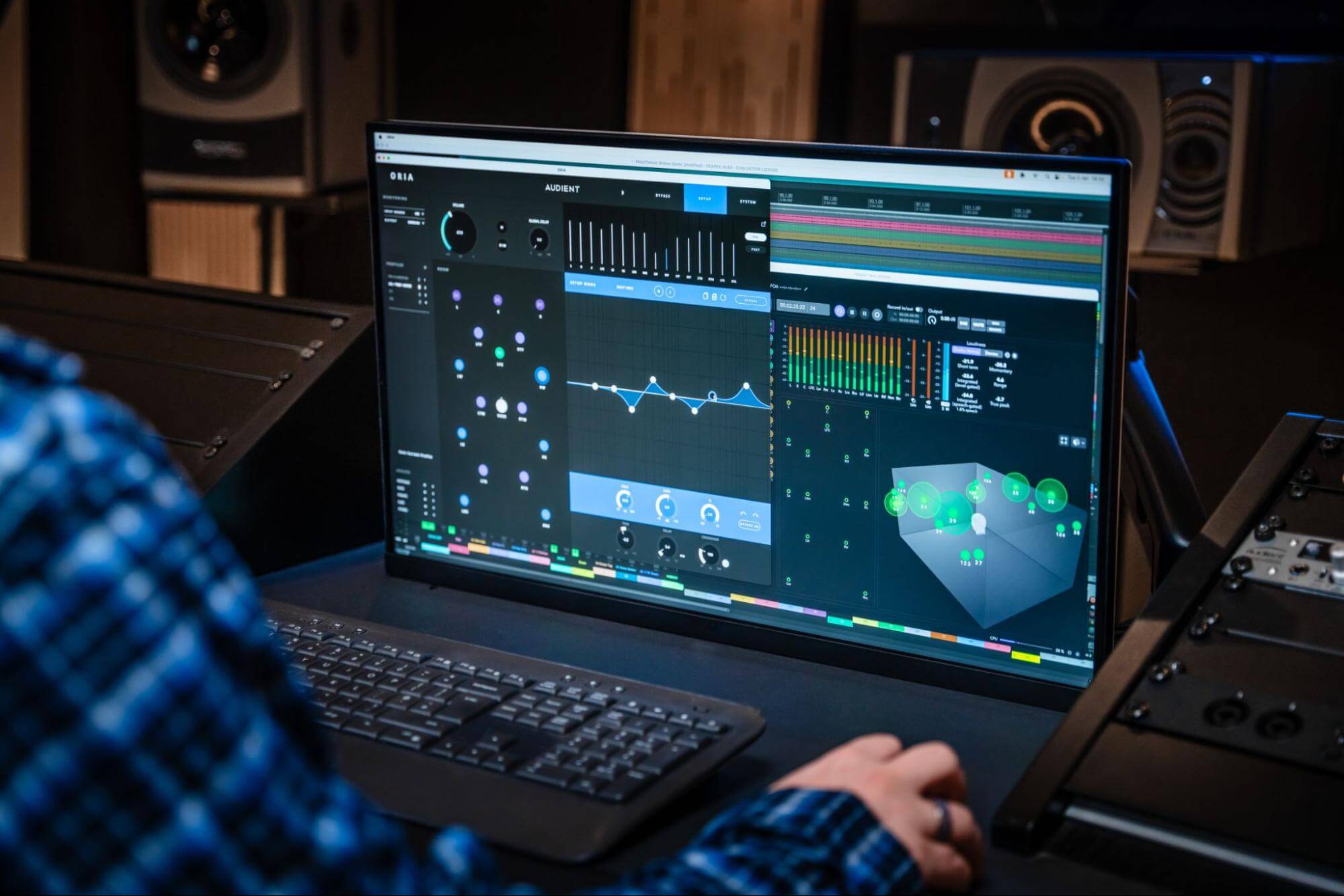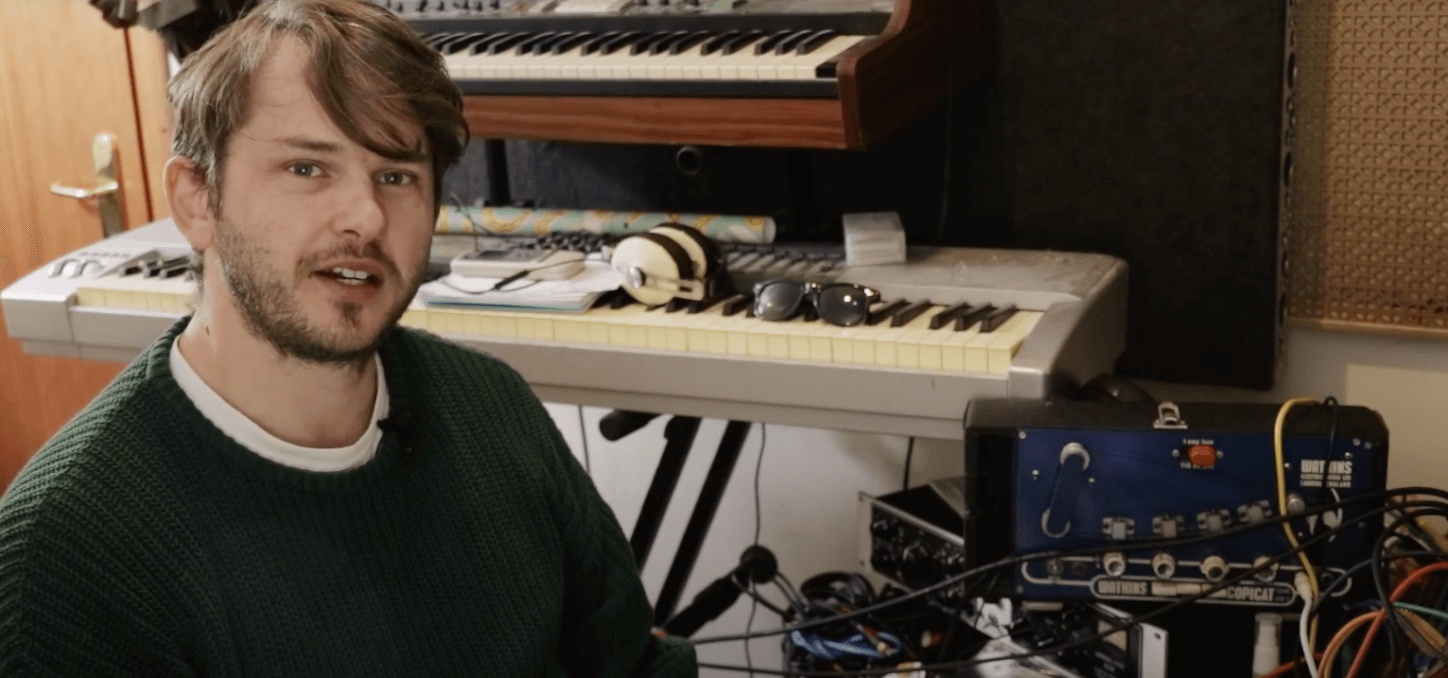(If you’re not familiar with the fundamentals of immersive audio, we recommend taking in our Beginner’s Guide to Dolby Atmos before reading this article.)
Immersive audio has taken off in a big way over the last few years, spearheaded by the increasing ubiquity of Dolby Atmos speaker systems and soundbars in the home listening environment, and its adoption by some of the biggest streaming platforms, including Apple Music and Tidal. While the playback of Atmos in a multi-speaker array is self-explanatory to an extent – the sound is moved around the room by dynamically balancing it between any number of deliberately positioned speakers – the translation of an Atmos mix to the fixed two-channel output of a set of headphones seems impossible on paper, and quasi-magical when you actually hear it.
However, not only is it eminently possible and decidedly earthly, but the technique used to do it dates all the way back to the 19th Century, and the discovery of a rather nifty combination of audio engineering and psychoacoustic trickery known as ‘binaural recording’. This enabled the capture of stereo recordings (ie, consisting of only left and right channels) that, when listened to through headphones, gave the listener the impression that they were located at the centre of a 360-degree soundstage, rather than the mix sounding as if it was inside their head, as is the case with a conventional stereo signal.

How does binaural recording work?
The core concept behind binaural recording couldn’t be more straightforward: a human being heard everything through a pair of outward-facing ears located on either side of their head, so by recording a signal through two outward-facing microphones placed inside the ears of a dummy head (or, at a pinch, a pair of mics simply mounted a head’s width apart), all the signal blocking and interference caused by said head, and the directional information that that and the stereoscopic input of the ears themselves sends to the brain, are captured. The upshot is that the spatiality of the recorded space and all the sound sources within it are represented with remarkable realism upon playback. If you were to record, say, a band playing in a large room through a binaural microphone rig, when you listen back to the recording through headphones (and only through headphones!), every instrument would appear to be in the same position within a flawless binaural representation of that room as it did in the real world.
As mentioned, this recording would only playback with the desired immersive effect through headphones, not speakers, since the left and right channels must be heard in complete isolation by their corresponding ears for it to work.

How does binaural simulation work?
Today, that very same binaural recording technique can be simulated after the fact – at the mixing stage, rather than the recording stage – with Dolby Atmos mixes in order to replicate the 3D immersive effect through any standard set of headphones. This binaural simulation (ie, the conversion of a multi-channel immersive mix to an equally immersive stereo output) is done by applying a Head-Related Transfer Function (HRTF) to the multichannel mix – that is, an algorithmic model of the aforementioned human head and ear canals, simulating the way in which they affect the perception of sound in terms of spatial positioning. A person’s individual HRTF is unique to them, and obviously it’s not possible for any production or playback system to take every possible HRTF into account, so binaural conversion systems need to work to an arbitrary average.
Because of this, binaural audio works much better for some people than others: if your head or ear canal morphology are a long way off from the average, it’s inevitably going to hinder the effectiveness of what is a largely morphology-driven process. To counter this, a few headphone manufacturers provide customisation services of various kinds with which to adapt the HRTF to your head and ear shape. The most notable of these is Apple, whose recently-introduced Personalised Spatial Audio setup routine for AirPods and Beats headphones has you taking photos of your head with your iPhone for use as calibration data.

How do I use binaural simulation with my Dolby Atmos mixes?
As with every other aspect of Atmos music production, Dolby have gone out of their way to make rendering your multichannel Atmos mixes to binaural output supremely easy. If you’re using Logic Pro, Pro Tools or Nuendo, you’ll find a binaural settings panel within the integrated Dolby Atmos Renderer plugin. For all other DAWs, alongside the Dolby Atmos Renderer application, you’ll just need to instantiate the free Dolby Atmos Binaural Settings Plug-In. Either way, the only user interaction required is the simulated distancing of each Atmos Bed channel and Object from the listener’s position within the binaural mix via a series of drop-down menus: Off (no spatial processing), Near, Mid or Far. With that done, you can monitor your binaural mix through headphones, then, ultimately, export it as a single stereo file for discrete distribution, and/or embed its metadata into the Atmos Master File for automatic application only when played back through headphones.
Naturally, expecting a perfect ‘virtual’ version of your lovingly crafted 11.4.1 project for mixing through headphones would be wildly optimistic, but what you will get in your cans should be good enough for working up a track on the go, and will, of course, qualify as fully representative of your eventual binaural master.
Finally, it should be said – and this won’t come as a surprise – that there are limits to how convincingly a set of physical speakers can be simulated within a pair of headphones. The binaural simulation of Atmos works best with careful attention paid to those Binaural Settings Plug-in parameters, and if you come at it with the aim of creating something that works in headphones specifically, even if it ends up varying somewhat from the loudspeaker mix, you won’t go far wrong.
Our Products
-

2in | 2out Audio Interface
-

10in | 6out Audio Interface
-

10in | 14out Audio Interface
-

20in | 24out Audio Interface
-

24in | 32out Audio Interface
-

2in | 2out Audio Interface
-

4in | 4out Audio Interface
-

24in | 24out Audio Interface
-

Everything you need to start recording
-

8 Channel Smart Preamp with AD/DA
-

8 Channel Mic Pre & ADC
-

8 Channel Mic Pre + Tone Control
-

Modular Analogue Recording Console
-

Small Format Analogue Recording Console
-

Small Format Analogue Recording Console
-

Immersive Audio Interface and Monitor Controller
-

Desktop Monitor Controller





